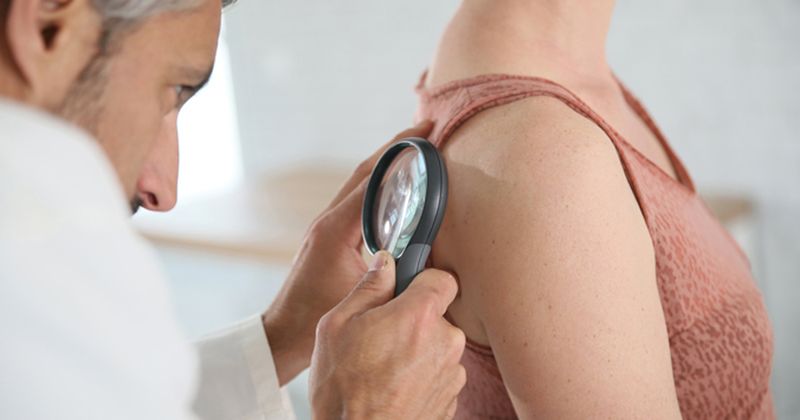Hypericin photodynamic therapy efficacious in early-stage mycosis fungoides
Topical synthetic hypericin ointment, activated with visible light, shows efficacy in reducing mycosis fungoides-cutaneous T-cell lymphoma lesions, according to a phase 3 study.
“This trial studies early-stage disease and it really showed this was efficacious and extremely well tolerated, both at primary endpoint as well as secondary endpoints,” Aaron R. Mangold, MD, associate professor of dermatology and chair of medical dermatology and dermatology research at the Mayo Clinic and one of the study’s authors, told Healio.

The phase 3 placebo-controlled, double-blind, multicenter, randomized FLASH study included 166 patients with early-stage mycosis fungoides-cutaneous T-cell lymphoma. (MF/CTCL), who were randomly assigned 2:1 to receive hypericin 0.25% (HyBryte, Soligenix) photodynamic therapy (PDT) or placebo twice weekly for 6 weeks on three index lesions.
During an additional 6 weeks, all patients received the active drug on index lesions and, in an optional third 6-week period, patients received active drug on both index and additional lesions.
Treatment response was defined as an improvement of at least 50% in cumulative modified Composite Assessment of Index Lesion Severity score from baseline at the 8-week follow-up.
The 116 patients treated with hypericin PDT had an index lesion response rate of 16% compared with 4% of the 50 patients treated with placebo (P = .04).
In the second cycle, that number increased to 40% for those who received hypericin PDT in both 6-week cycles and, after the optional third cycle, the index lesion rate response increased to 49% for those who received hypericin PDT.
“This is the first trial we’ve seen in over a decade showing this sort of efficacy in a randomized fashion. It’s something very much needed in this rare disease,” Mangold said. “From a clinical standpoint, this is a therapy that, presumed is FDA approved at some point, will really be a frontline therapy for early state mycosis fungoides.”
The study’s limitations included a short duration of treatment in each cycle.
“When you look further on, the response rate goes to 40% to 50% with continued treatment,” Mangold said. “I think the thing we notice is individuals who stay on these medications have tolerated them very well and seem to get a deeper, more durable response.”
